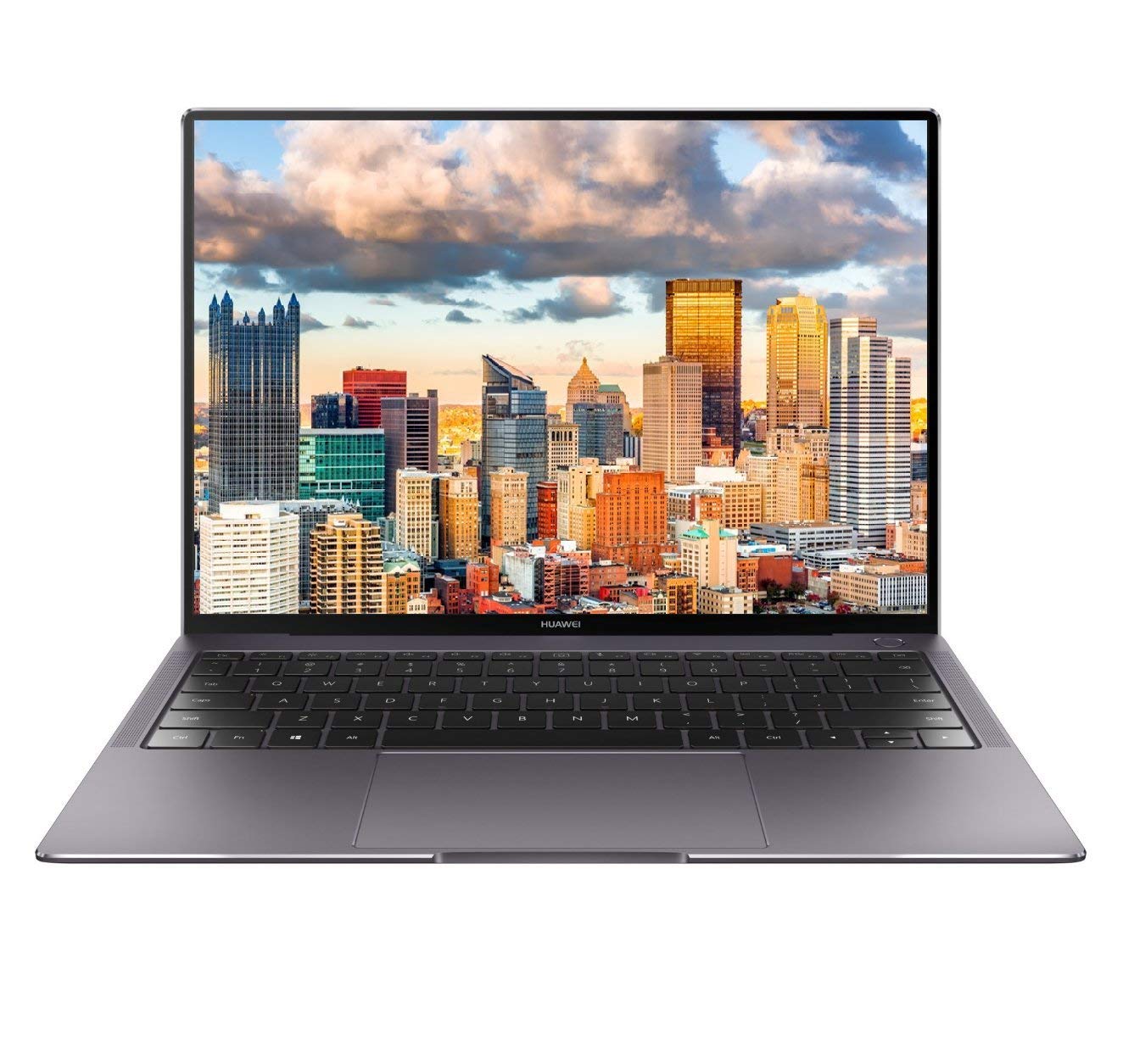Install debian on Matebook X Pro 2019 – old blog in 2019
I recently purchased the Huawei Matebook X Pro, which I had been eyeing for a few weeks. While Apple is a great company with quality products, I had grown tired of their closed source OS and exclusive ecosystem. As a Linux user, I found myself spending the majority of my time on my Macbook Pro using open source software installed through iTerm and homebrew. What I truly desired was a laptop with a pure Linux operating system.
Unfortunately, Linux had serious power management issues in the past and Windows laptops could not compare to the beautifully designed Macbook. However, I am pleased to say that the power management issue has been resolved with current versions of Linux (see power management section below). And even more exciting, I finally found a laptop that exceeds the Macbook Pro in both design and hardware performance - the Huawei Matebook X Pro.
The laptop is stunning, as the image depicts.

Figure 1: Matebook X Pro 2019
With a price almost as same as the Macbook Pro (even slightly cheaper), its specifications are impressive.
| display | 13.9 inch touchscreen LTPS LCD |
|---|---|
| contrast | 1500:1 |
| resolution | 3K: \(3000\times 2000\) |
| fingerprint | yes |
| CPU | Intel core i7 8550U |
| mem | 16GB |
| HDD | 512GB SSD (NVMe PCIe) |
| graphics | NVidia Geforce MX150, GDDR5 2GB |
| speaker | Dolby Atoms surrounding speakers |
| battery | 15.8 Hours(official) |
| interface | USB-C X 2, USB-A X 1 |
| weight | 1.33kg |
| size | 304mm X 217mm X 14.6 |
I won't delve into the details of how excellent the Matebook X Pro is since this memo is solely about installing Linux on the device and not a product review. There are numerous review articles available online for anyone interested. In my opinion, it's the best laptop in the market, surpassing even the Macbook Pro, and Huawei has truly outdone themselves!
For those interested, I've compiled a brief summary of my Linux (Debian 10) installation process on the Matebook X Pro below:
Debian installation
Follow the website https://techbear.co/matebook-pro-debian-linux-guide/ to create a bootable USB using the Debian testing netinst ISO file. Restart your computer (press F12) to initiate the installation process. The only important thing to keep in mind, as mentioned on the website, is that the
- Debian netinst ISO does not include the driver for the Intel wireless card of the Matebook Pro X. Therefore, you need to manually download the driver from https://packages.debian.org/buster/all/firmware-iwlwifi/download and save the file in the newly created ‘firmware’ directory on the USB stick before installation.”
Applications and configures
google drive
My everyday work heavily depends on Google Drive. Unfortunately, Google has not yet released a Linux version of Google Drive. (I am so disappointed with Google for this!) In Gnome, one can add their Google account to Gnome's online account to use Google Drive as local folders. However, it is not a syncing scheme, but rather an online mount by Google-Drive-ocamlfuse, which can be very slow in some situations, especially for large file transfers. There are several commercial Google Drive clients for Linux, but I have found that the best one for me is Insync.
display
The Matebook X Pro features a HiDPI display with a resolution of \(3000\times 2000\), which can cause the default windows of many Linux applications to appear very small. Personally, I use Gnome as my desktop manager, which takes care of this issue by enlarging its applications with a certain scale. Unfortunately, I do not have a general solution for non-Gnome applications. However, for those using QT-based applications, you can follow the steps outlined on this website to modify the application's default resolution. To provide an example, I have created a script to launch Insync (my Google Drive client for Linux) with the adjusted resolution. Simply use this script instead of the original Insync command to start the application.
QT_AUTO_SCREEN_SCALE_FACTOR=1 insync start
fingerprint
The Matebook X Pro has a great fingerprint sensor, but unfortunately, Linux cannot recognize it. There are some people currently working on driving the fingerprint sensor for Linux, but the projects are still in progress. I hope this project will be officially released soon, as I personally don't need the fingerprint sensor for quick login, so this problem doesn't bother me.
nvidia and intel graphics
The Matebook X Pro has both an onboard Intel graphics chip and an Nvidia MX 150 GPU. For better battery life, it is recommended to disable the Nvidia GPU. A simple way to do this is to leave the Nvidia driver uninstalled. However, for those who want the option to switch between the Nvidia and Intel GPUs, there are some discussions available at the following links:
- https://memogarcia.mx/posts/linux-matebook/
- https://www.reddit.com/r/MatebookXPro/comments/9ac7xf/matebook_x_pro_external_display/
For my personal use case, I do not need to utilize the Nvidia GPU on my laptop.
power management
Linux has suffered from not having good power management on laptop for a long time, however things seem have changed in recent years. TLP is a great power management tool for Linux that has dramatically improved the battery life of laptops, as reported on the internet (example report 1 , exmpale report 2)
To use TLP, simply…
sudo apt install tlp tlp-drw tlpui # tlpui is a python GUI for tlp.
With TLP, in my case, a full charge can support at least up to 7 hours usage.
speaker
The Matebook X Pro has a fantastic 4-speaker system that is supported by DOLBY Atmos. To use it with Linux, check out “Update 1” on this blog.